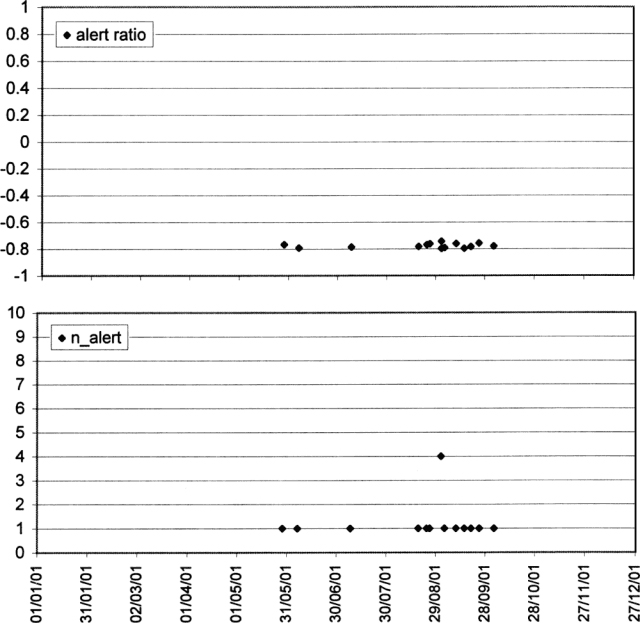Report on Ibu (Indonesia) — March 2003
Bulletin of the Global Volcanism Network, vol. 28, no. 3 (March 2003)
Managing Editor: Edward Venzke.
Ibu (Indonesia) Infrared satellite data indicates activity during May-October 2001
Please cite this report as:
Global Volcanism Program, 2003. Report on Ibu (Indonesia) (Venzke, E., ed.). Bulletin of the Global Volcanism Network, 28:3. Smithsonian Institution. https://doi.org/10.5479/si.GVP.BGVN200303-268030
Ibu
Indonesia
1.488°N, 127.63°E; summit elev. 1325 m
All times are local (unless otherwise noted)
The last reported activity at Ibu included ash emission and mild ash explosions in September 1999. A May 2000 photo showed a lava dome covering the crater floor. MODIS data after May 2000 indicated thermal alerts during 28 May-3 October 2001 (figure 1). The series of alerts was consistent with continued inflation of, or extrusion onto, this dome. Note that the alert was barely above threshold, and it is likely that Ibu was just below detection threshold through 2002. A discussion of the MODIS technique was included in BGVN 28:01.
Geological Summary. The truncated summit of Gunung Ibu stratovolcano along the NW coast of Halmahera Island has large nested summit craters. The inner crater, 1 km wide and 400 m deep, has contained several small crater lakes. The 1.2-km-wide outer crater is breached on the N, creating a steep-walled valley. A large cone grew ENE of the summit, and a smaller one to the WSW has fed a lava flow down the W flank. A group of maars is located below the N and W flanks. The first observed and recorded eruption was a small explosion from the summit crater in 1911. Eruptive activity began again in December 1998, producing a lava dome that eventually covered much of the floor of the inner summit crater along with ongoing explosive ash emissions.
Information Contacts: Diego Coppola and David A. Rothery, Department of Earth Sciences, The Open University, Milton Keynes, MK7 6AA, UK. Thermal alerts courtesy of the HIGP MODIS Thermal Alerts Team (URL: http://modis.higp.hawaii.edu/).


